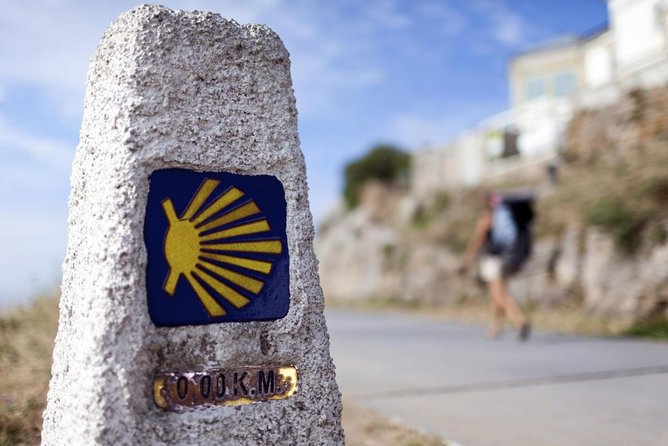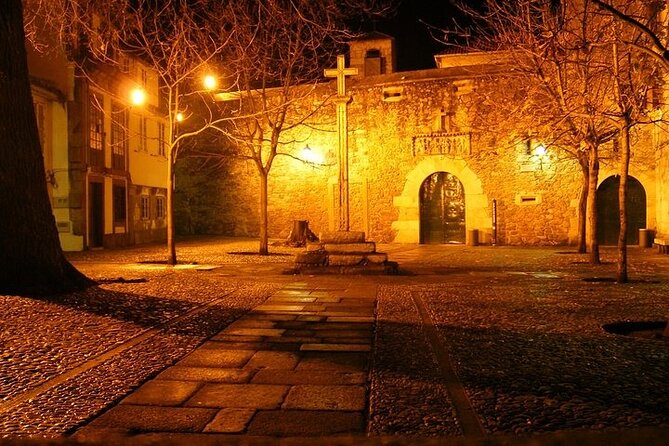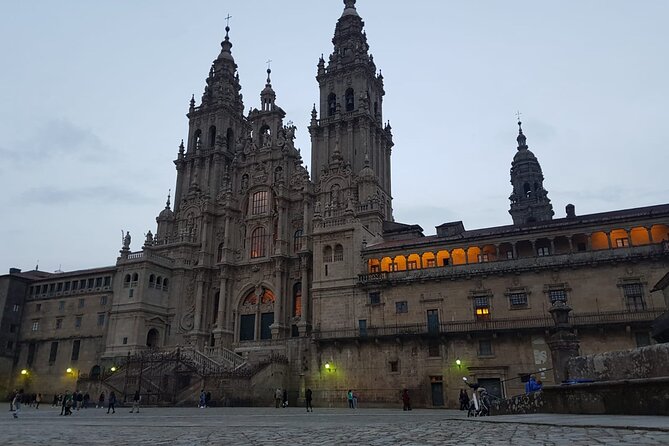The Camino de Santiago, a renowned pilgrimage route in Spain, has long been entwined with the fascinating history of the Templars. These military religious orders played a pivotal role in safeguarding and supporting the journey of countless travelers over the centuries. While the Templars’ architectural legacies and organizational prowess are well documented, the Camino is also steeped in captivating legends that have captivated the imaginations of those who seek to uncover its spiritual depths. Delving into this intriguing intersection of history and myth can provide invaluable insights into the enduring allure of this sacred path.
Key Points

-
The Templars played a crucial role in establishing hospitals, monasteries, and providing security for pilgrims along the Camino de Santiago in the Middle Ages.
-
Legends of ghostly figures guiding lost pilgrims and miraculous healings at sacred sites captivate travelers and enhance the spiritual allure of the Camino.
-
The majestic cathedrals, ornate monasteries, and historic architectural wonders along the Camino are a testament to the deep religious significance of the pilgrimage route.
-
The Camino de Santiago transcends religious boundaries, offering transformative experiences related to self-discovery and spiritual fulfillment for both Christian and non-religious travelers.
-
Proper preparation, including packing wisely, breaking in comfortable footwear, and researching the route, is essential for a fulfilling journey along the Camino de Santiago.
The Camino De Santiago’s History
The Camino de Santiago, also known as the Way of Saint James, is one of the most renowned pilgrimage routes in the world.
This historic path leads to the Cathedral of Santiago de Compostela in northwestern Spain, where the remains of the apostle Saint James the Great are said to be buried.
Pilgrims have trekked this route for centuries, seeking spiritual enlightenment, personal growth, or simply the adventure of the journey.
The Camino de Santiago has a rich history, with various routes crisscrossing Europe and converging in Spain.
Along the way, travelers encounter stunning landscapes, charming villages, and a deep sense of community among fellow pilgrims.
You can also read our reviews of more tours and experiences in Santiago de Compostela.
The Templars’ Role in the Camino

The Templars played a significant role in the development and protection of the Camino de Santiago over the centuries.
As a powerful and influential military order, the Templars established hospitals, monasteries, and fortified outposts along the Camino to provide aid and security for pilgrims.
They also helped defend the pilgrimage route from bandits and invaders, ensuring the safe passage of those making the journey to Santiago de Compostela.
The Templars’ involvement in the Camino was a crucial factor in its growth and popularity during the Middle Ages, as their presence provided a sense of safety and stability for those undertaking the arduous pilgrimage.
Legends and Myths of the Camino

Along the historic Camino de Santiago, pilgrims often encounter a rich tapestry of legends and myths that have captivated the imaginations of travelers for centuries.
From stories of ghostly figures guiding lost pilgrims to tales of miraculous healings at sacred sites, the Camino is steeped in a sense of the mystical.
One of the most enduring legends is that of the Milky Way, which is said to have been formed by the dust from the boots of countless pilgrims.
These legends add to the Camino’s allure, providing a sense of wonder and spiritual connection for those making the journey.
Architectural Wonders Along the Camino

Majestic cathedrals, ornate monasteries, and awe-inspiring pilgrim hostels dot the landscape along the Camino de Santiago, showcasing the region’s rich architectural heritage.
The impressive Romanesque cathedral in Santiago de Compostela, with its striking granite façade, is a prime example.
Further along the route, travelers encounter the grand Monasterio de Samos, a Benedictine abbey dating back to the 6th century.
And in towns like Astorga, the distinctive "Palacio Episcopal" – the bishop’s palace – stands as a testament to the influence of the Church.
These architectural wonders provide a tangible link to the Camino’s storied past, inspiring awe and wonder in all who walk its hallowed path.
Spiritual Significance of the Pilgrimage
For centuries, the Camino de Santiago has drawn pilgrims from across the globe, captivating them with its profound spiritual significance.
The pilgrimage to the shrine of St. James the Great in the cathedral of Santiago de Compostela is considered a sacred journey, imbued with deep religious meaning for both Christian and non-religious travelers.
Along the route, pilgrims engage in introspection, seek inner peace, and connect with the rich history and culture of the Iberian Peninsula.
The Camino’s spiritual allure lies in its ability to transcend religious boundaries, offering a transformative experience that speaks to the universal human desire for self-discovery and spiritual fulfillment.
The Camino’s Impact on Local Culture
The Camino de Santiago has profoundly impacted the local culture along its historic routes. For centuries, pilgrims have traversed these paths, leaving an indelible mark on the communities they encounter.
Local economies have adapted to serve the needs of travelers, with shops, restaurants, and accommodations catering to the influx of visitors.
The Camino has also inspired a renewed appreciation for traditional art forms, with local artisans showcasing their craftsmanship to the passing pilgrims.
On top of that, the influx of diverse cultural perspectives has enriched the region, fostering a spirit of openness and exchange.
The Camino’s influence extends beyond the physical journey, shaping the very fabric of the communities it connects.
Preparing for the Camino De Santiago
Proper preparation is key to a fulfilling journey along the Camino de Santiago. Aspiring pilgrims should consider the following:
-
Pack wisely – Limit belongings to the essentials, as you’ll be carrying your pack for extended periods.
-
Break in your boots – Ensure comfortable, well-fitted footwear to prevent blisters and injuries.
-
Train beforehand – Incorporate walking into your routine to build endurance and strength.
Plus, it’s wise to research the route, accommodations, and any necessary paperwork or permits.
With thoughtful preparation, pilgrims can fully enjoy the spiritual and physical challenges of the Camino de Santiago.
Highlights of the Guided Tour
Embarking on this guided tour, travelers enjoy the captivating history and legends surrounding the Camino de Santiago.
They’ll explore the role of the Templars, the mysterious medieval knights, and their connection to the iconic pilgrimage route. The local guide provides in-depth insights, bringing to life the rich tapestry of myths and traditions that have long captured the imagination of visitors.
From the enchanting cathedral in Santiago de Compostela to the hidden gems along the way, the tour offers a comprehensive look at this revered spiritual journey.
With a maximum group size of 10, the experience promises an intimate and personalized exploration of the Camino’s Templar legacy.
Frequently Asked Questions
What Is the Total Duration of the Guided Tour?
The guided tour doesn’t specify a total duration. The information provided focuses on the tour overview, booking details, accessibility, and meeting details, but doesn’t mention the total length of the experience.
Are Meals or Accommodations Included in the Tour Package?
The tour package does not include any meals or accommodations. It’s a guided walking tour focused on the history and legends of the Camino de Santiago in Santiago de Compostela, Spain.
Can Solo Travelers Book This Tour or Is It Only for Groups?
Solo travelers can book this tour, as the maximum group size is 10 travelers. Larger groups of more than 6 travelers will be rejected, so solo travelers are welcome to reserve a spot for this experience.
Are There Any Physical Fitness Requirements to Participate in This Tour?
The tour is suitable for most travelers, as it states "Most travelers can participate." There don’t appear to be any specific physical fitness requirements mentioned in the provided information.
Does the Tour Guide Speak Languages Other Than Spanish?
The tour guide likely speaks additional languages beyond Spanish, as the tour caters to an international audience, but the listing does not explicitly state which other languages are available. Participants should inquire about language options when booking the tour.
Sum Up
The Camino de Santiago is a renowned pilgrimage route with a rich history and cultural heritage. The Templars played a crucial role in its development, while legends and myths have added to the spiritual allure of this sacred journey. The Camino’s impact on local communities and the architectural wonders along the way continue to captivate visitors, making it a transformative experience for those who embark on this timeless pilgrimage.
More Tour Reviews in Santiago de Compostela
- Santiago de Compostela: 4hours tour with everything included
- From Santiago: A Coruña & Betanzos Full-Day Coastal Tour
- Santiago: Visit to the Cathedral and Museum
- Santiago de Compostela: Vigo Christmas Lights Guided Tour
- Santiago de Compostela: Tour of the Templars in Spanish
- Santiago: Guided Foodie Tour with Drinks, Tapas & Live Music
Not for you? Here's more nearby things to do in Santiago de Compostela we have reviewed
- Santiago de Compostela: 4hours tour with everything included
- From Santiago: A Coruña & Betanzos Full-Day Coastal Tour
- Santiago: Visit to the Cathedral and Museum
- Santiago de Compostela: Vigo Christmas Lights Guided Tour
- Santiago Complete Tour: City, Portico and Cathedral Tickets
- Santiago: Cathedral & Museum Tour + Pórtico of Glory Option
- Porto: Santiago de Compostela and Valença Day Trip
- Old town walking tour in a small group
- Discover Santiago in 4 hours: its cathedral, Pórtico, and historic quarter.
- Santiago: City Highlights Guided Walking Tour
- From Santiago: Ribeira Sacra & Sil River Canyon Boat Tour
- The dark side of Santiago de Compostela
